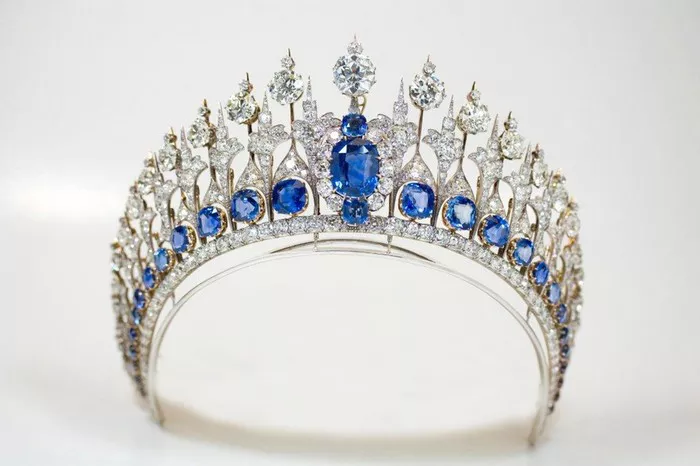Pink sapphire, a member of the corundum family, holds a special place in the world of gemstones. Its delicate and sweet coloration has garnered immense popularity, making it a cherished choice for jewelry enthusiasts. This article aims to provide a detailed introduction to pink sapphire, covering its characteristics, uses, and appreciation from a professional perspective.
Characteristics of Pink Sapphire
Pink sapphire is a variety of sapphire distinguished by its pink hue. It’s important to note that the term “sapphire” in gemology does not specifically refer to blue stones; rather, it encompasses all corundum gemstones except for those that are primarily red, which are classified as rubies. Therefore, pink sapphire is part of a broader category known as fancy colored sapphires, which include a myriad of colors ranging from yellow to green, purple, and even orange.
The color of pink sapphire is primarily due to trace elements such as iron and titanium within the corundum crystal structure. However, the exact shade of pink can vary widely, influenced by factors like the concentration of these elements and the gemstone’s cutting and polishing process. Shades of pink sapphire range from a light, almost blush-like pink to a deeper, more intense hot pink. Some pink sapphires may even exhibit a secondary color, such as a hint of orange or purple, adding to their unique charm.
Formation and Origin
Pink sapphires are formed under extreme conditions in the Earth’s crust, often in igneous rocks and metamorphic rocks. They can be found in various parts of the world, with notable deposits in Myanmar (formerly Burma), Sri Lanka, Madagascar, and Australia. Each mining location tends to produce sapphires with distinct characteristics, including color saturation and clarity.
For instance, pink sapphires from Myanmar are often highly valued for their vivid and intense pink hues. Sri Lanka, on the other hand, is renowned for producing sapphires with a silky, velvety texture and a range of pink shades, including the rare and sought-after padparadscha sapphire, which displays a unique combination of pink and orange.
Uses in Jewelry
Pink sapphire’s appealing color and durability make it an excellent choice for jewelry. With a hardness rating of 9 on the Mohs scale, pink sapphire is second only to diamond in terms of hardness, making it highly resistant to scratching and wear. This durability, combined with its beautiful color, makes pink sapphire an ideal gemstone for engagement rings, pendants, earrings, and other fine jewelry pieces.
The versatility of pink sapphire also allows it to be paired with a wide range of metals and other gemstones. For example, pink sapphire engagement rings can be set in gold, platinum, or palladium, and complemented by diamonds or other colored gemstones for a unique and personalized look.
Appreciation and Value
The value of pink sapphire is determined by several factors, including color, clarity, cut, and carat weight. Color is particularly important, as the most desirable pink sapphires exhibit a strong, vivid pink hue with good saturation. Clarity also plays a role, as sapphires with fewer inclusions tend to be more valuable.
The cut of the gemstone is crucial for maximizing its beauty and brilliance. A well-cut pink sapphire will display excellent light reflection and dispersion, enhancing its overall appearance. Carat weight, of course, also affects the price, as larger sapphires are generally more rare and thus more valuable.
In addition to its intrinsic qualities, the demand for pink sapphire also influences its value. As a popular gemstone for engagement rings and other fine jewelry, pink sapphire has seen a steady increase in demand over the years. This demand, combined with the limited supply of high-quality natural pink sapphires, has contributed to a rise in prices.
Identifying and Caring for Pink Sapphire
Identifying pink sapphire can be challenging, especially for those unfamiliar with gemology. It’s important to consult a professional gemologist or jeweler who has access to advanced testing equipment and expertise in gemstone identification.
Once you’ve acquired a pink sapphire, proper care and maintenance are essential to preserve its beauty and value. Pink sapphire is relatively easy to care for, as it is resistant to most chemicals and scratching. However, it’s still important to avoid exposing the gemstone to extreme temperatures or harsh cleaning agents. Regular cleaning with a soft cloth and warm water can help maintain its shine and luster.
Conclusion
In summary, pink sapphire is a beautiful and versatile gemstone that holds a special place in the world of jewelry. Its delicate pink hue, combined with its durability and scarcity, makes it an excellent choice for engagement rings, pendants, earrings, and other fine jewelry pieces. With proper care and maintenance, pink sapphire can retain its beauty and value for generations.
Related topic:
- Nigerian Yellow Sapphire: A Gemstone of Distinction
- Citrine and Yellow Sapphire: Which One Should You Buy?
- Citrine and Yellow Sapphire: Which One Should You Buy?


